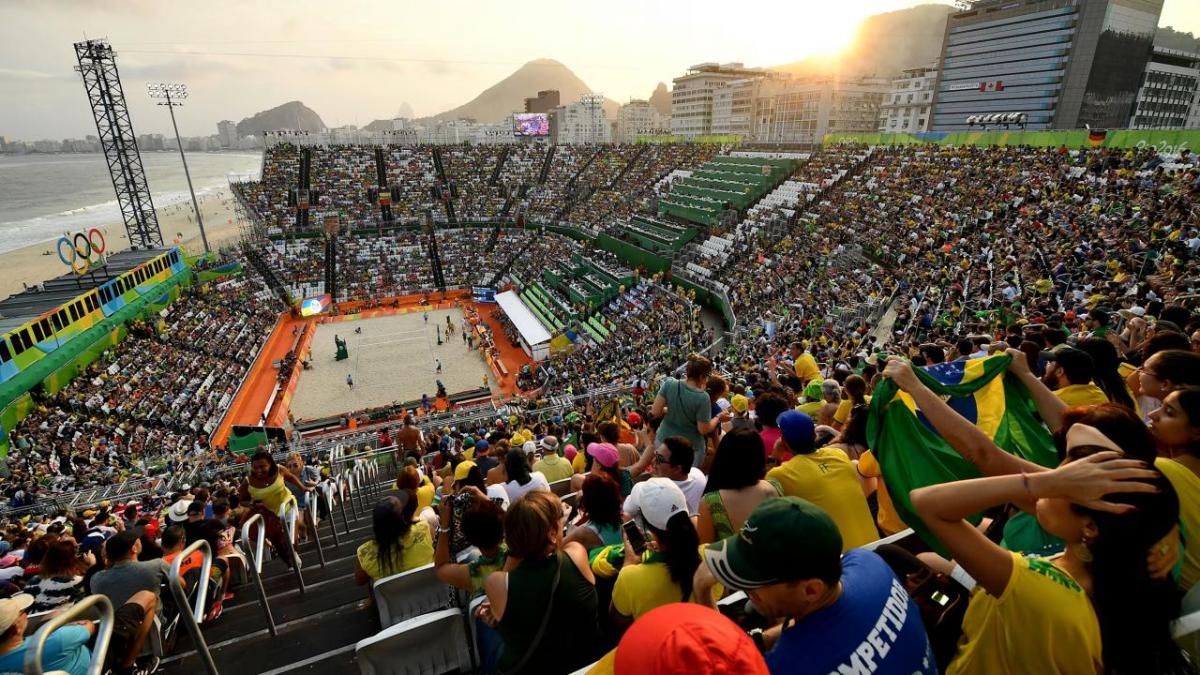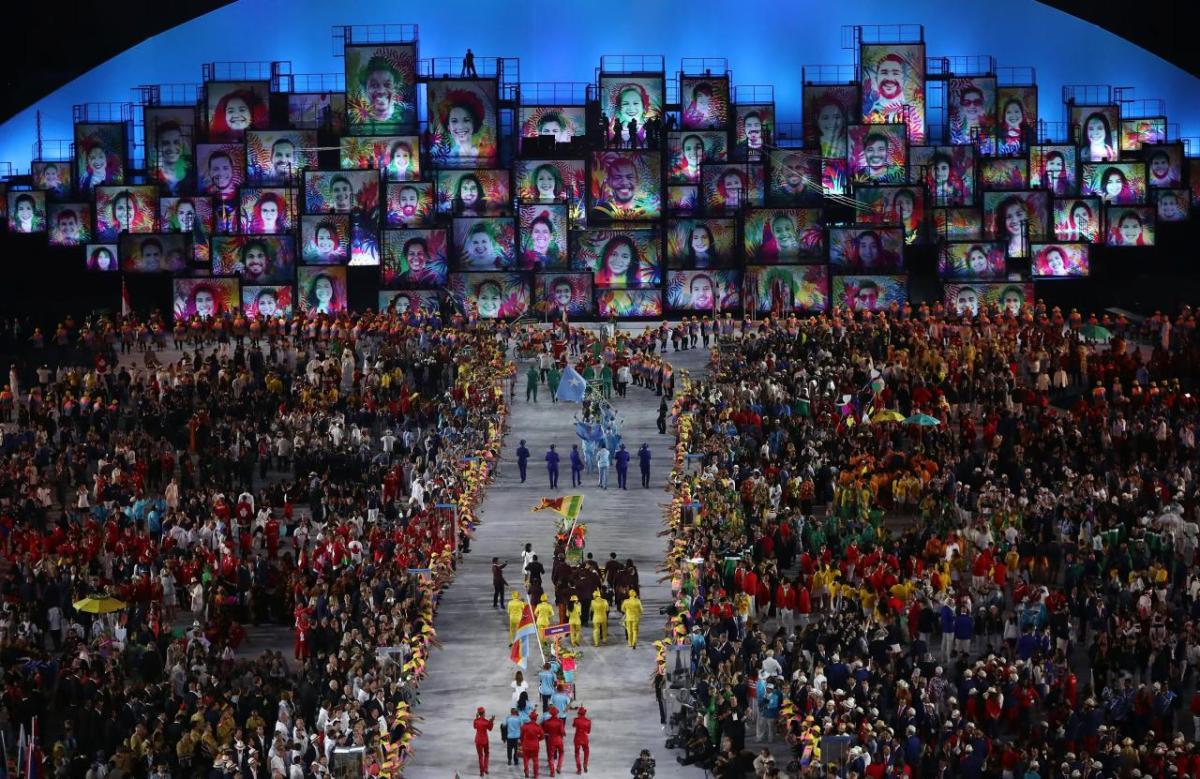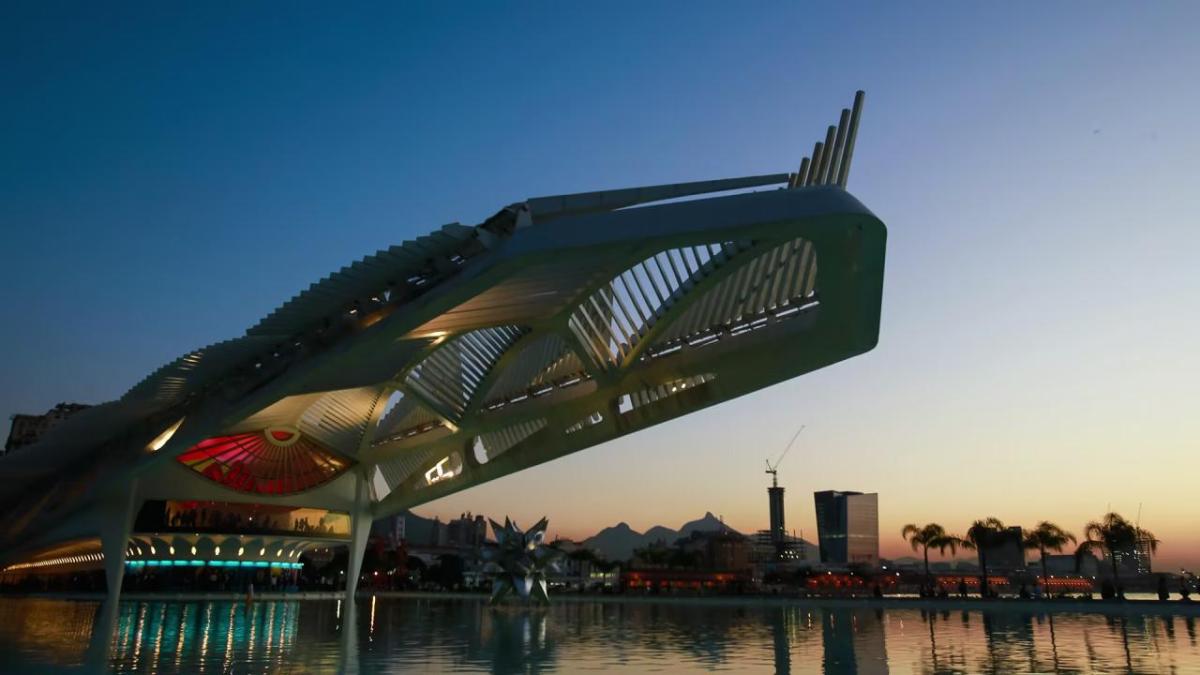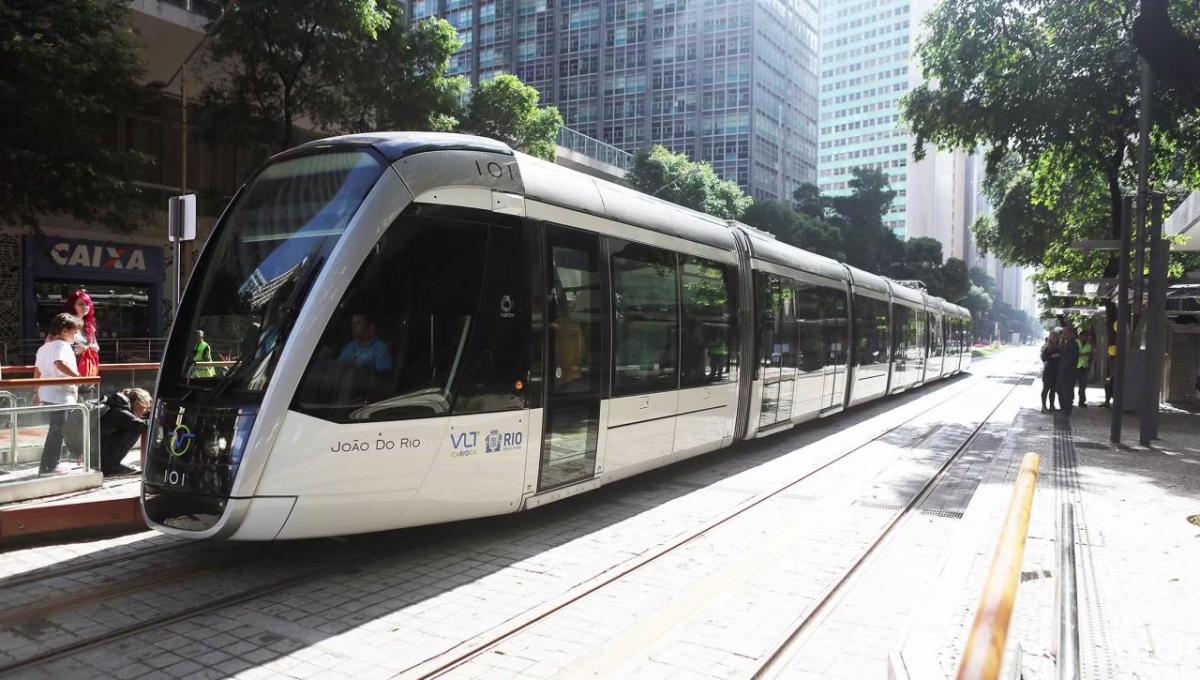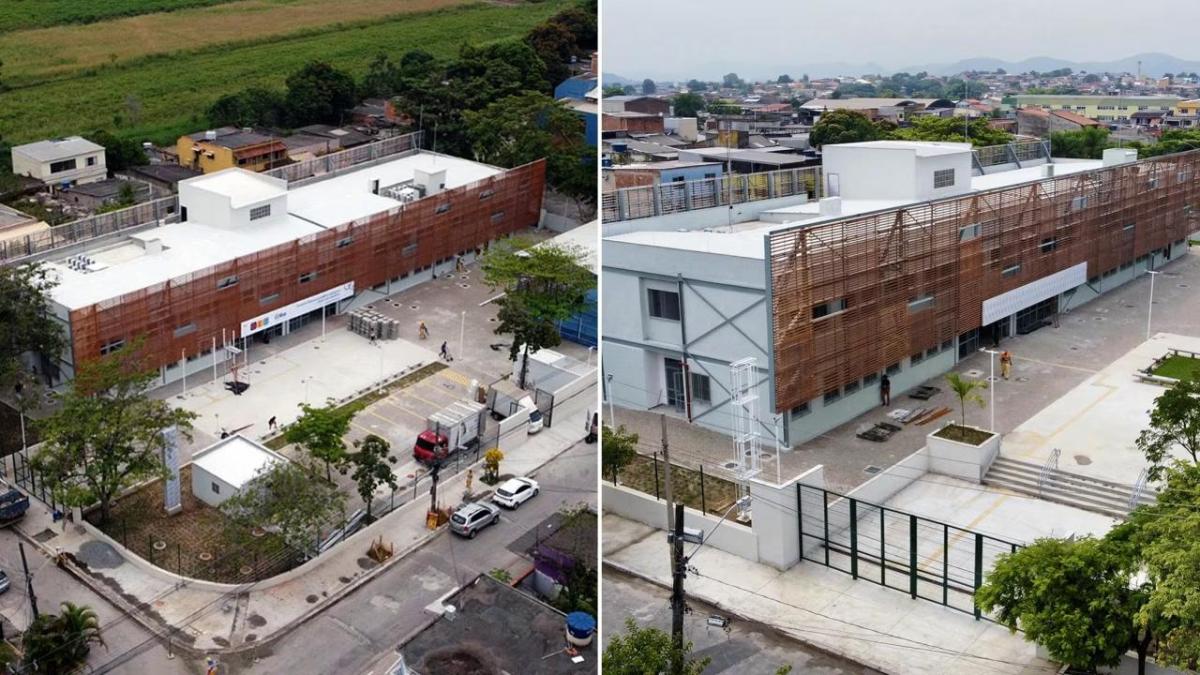Rio 2016: A Catalyst for Urban Renewal and Economic Growth
International Olympic Committee news
As the Olympic Games Paris 2024 enter their second week, Rio de Janeiro marks the eighth anniversary of the Olympic and Paralympic Games 2016, whose impacts continue to shape the city.
Rio 2016, with its spectacular sporting performances, set new records for global visibility with half of the world’s population watching the coverage of the Games. The hosts wowed visitors by showcasing their best assets: vibrant culture, captivating music and stunning natural beauty.
The Opening Ceremony, held at the Maracanã Stadium, one of the world’s most famous football venues, set the tone with a spectacular display of Brazilian music and a tribute to the Atlantic rainforest. The iconic Copacabana Beach hosted beach volleyball, triathlon and marathon swimming, blending sport with urban natural scenery.
One of the biggest moments was Brazilian footballer Neymar leading his team to a historic gold medal in men’s football, igniting celebrations across the country. Just as she has done in Paris, Simone Biles captivated audiences with her extraordinary performances, and Usain Bolt's triple victory, with gold in the 100m, 200m and 4x100m relay, solidified his legacy as one of the greatest sprinters in history.
Beyond spectacular sport, the Games served as an opportunity to accelerate transformation in the city. While governance challenges delayed the full realisation of Rio 2016’s legacy plans, their positive impacts are visible today, proving that the Games helped lay the groundwork for new economic, social and environmental development.
For Rio, the Games were the beginning of a renewed future. Although it has taken some years for the legacy plans to come to fruition, the Games have brought tangible benefits, which have helped transform the city and improve the lives of its citizens.
Tania Braga
IOC Head of Olympic Games Impact and Legacy
Revitalising the heart of Rio
Organisers were determined to use the Games as a catalyst for structural and impactful projects to address Rio’s urban quality of life, infrastructure and social cohesion. Today, this legacy is most visible in the port region. Suffering from neglect, with decaying infrastructure and abandoned buildings, the area saw a spectacular revitalisation. The Porto Maravilha project transformed five million square metres of urban space. The demolition of the Perimetral Elevated Highway, cutting it off from the waterfront, finally unveiled the scenic beauty of Guanabara Bay, and reconnected this part of the city with its stunning waterfront.
The project replaced the elevated highway with tunnels, improved road infrastructure and created high-quality public spaces. It introduced a mixed-use neighbourhood, blending commercial and residential areas and reversing suburbanisation trends. Preserving and restoring its historic and monumental heritage, the area is a blend of modern and old.
Key attractions, including the Museum of Tomorrow and the Rio Art Museum, now draw millions of visitors, turning the area into a bustling cultural district. The transformation was achieved through public-private partnerships. Porto Maravilha now serves as a vibrant public space enjoyed by all layers of Rio’s society, showcasing the city's commitment to preserving its history while fostering change and development.
Mobility and connectivity
The Games accelerated the development of Rio’s public transport infrastructure, helping to address the city's long-standing issues with traffic congestion and inadequate public transport.
The creation of the Bus Rapid Transit (BRT) and Light Rail Vehicle (VLT) networks, the construction of Line 4 of the city subway and upgrades to the SuperVia rail network combined to reduce commute times significantly, while the daily number of trips taken on high-capacity transport more than doubled.
The BRT network, featuring over 150km of dedicated bus lanes, has benefitted residents in the previously underserved north and west zones in three main corridors – Transoeste, Transcarioca and Transolímpica. More recently, a fourth corridor – Transbrasil – was added to the network. The VLT system further complements the BRT network by providing an efficient and eco-friendly transport option in the downtown and port areas.
The upgrade to the SuperVia rail network added or refurbished stations, increasing passenger capacity by 25 per cent. This network serves the most socially vulnerable neighbourhoods of the Rio metropolitan area.
Integrating the various modes of metropolitan transport in Rio de Janeiro was one of the main improvements. In addition to 20 new public transport interchange hubs, a new transport ticket led to considerable cost reductions for those using multiple modes of transport.
Sustainable urban development
Rio's commitment to long-term sustainability was showcased through the "nomadic architecture" concept, designing Olympic venues with their adaptive post-Games reuse in mind. The Arena of the Future, for example, a temporary sports venue located in the Barra Olympic Park, hosted handball and goalball competitions. It was constructed using modular components that could be easily dismantled and repurposed. Eight years after the event, it was transformed into four public schools, providing state-of-the-art facilities for 2,000 students.
Similarly, the swimming pools from the Olympic Aquatics Stadium were dismantled and reassembled. Three pools were relocated near the cities of Manaus, Salvador and São Paulo in 2019. The main swimming pool of the Aquatics Stadium was set up in Parque Radical in Inhoaíba in 2024, creating new recreational facilities for local communities.
Combining environmental and social benefits, the development of large green spaces such as Parque Madureira provided much-needed recreational areas and improved urban biodiversity. Parque Madureira was built along the railway line in a previously degraded area where electricity transmission towers used to stand, becoming a vital recreational hub and green space for over 1.4 million residents in the surrounding neighbourhoods.
The golf course was designed to maximise the presence of native vegetation, restore dunes within previously degraded areas and limit the turf grass to 38 per cent of the area. The result was the creation of 443,210m² (44 hectares) of new native vegetation, home to over 100 species of birds and over 263 species of mammals, frogs, snakes and lizards.
In what was a major sanitation improvement, the construction of the Waste Treatment Centre in Seropédica replaced the Gramacho landfill, significantly improving the city's waste management system and reducing the pollution of Guanabara Bay.
Economic benefits
Organisers prioritised social inclusion and economic development. Access to basic services, employment, income for the poorest households and other issues relating to the city’s quality of life were improved, according to several studies on the economic and social impact of the Games.
An independent 2018 study by Brazil’s Institute of Applied Economic Research (IPEA) showed that the city’s gross domestic product would have been 7.5 per cent lower had it not hosted the Games. It also demonstrated that the income of Rio’s poorest five per cent of people grew by nearly 30 per cent in the pre-Olympic period (2012-2015), while the city’s unemployment rate was halved during the same period.
Additionally, the tourism sector experienced a substantial uplift, with Rio welcoming over 1.17 million tourists during the Games, generating an estimated USD 1.2 billion in revenue. The increase in tourism not only provided immediate economic benefits but also positioned Rio as a prime global destination for future events.
Education
Rio 2016 harnessed sport as a catalyst for change in Brazilian education. The Rio 2016 education programme benefitted more than eight million students nationwide before the Games. As of 2024, two legacy programmes – Transforma and Impulsiona – continue to deliver teaching support to over 77,000 schools. They have brought about positive behavioural change among students, and led to an increase in physical activity and the number of sports played at Brazilian schools.
For their part, Rio de Janeiro’s 12 Olympic Education High-schools (GEOs) provide full-time schooling for thousands of children across the city, allowing them to improve their sporting skills while receiving the best education in the classroom.
Some Rio 2016 competition venues have also been converted into public schools. The venue for Olympic taekwondo and fencing and Paralympic judo in 2016, Carioca Arena 3, is now a sports education institution offering an enhanced sports curriculum for 900 students, while Carioca Arena 2, the setting for Olympic judo and wrestling and Paralympic boccia, will open as a branch of the Federal Institute of Technical Education in 2025.

